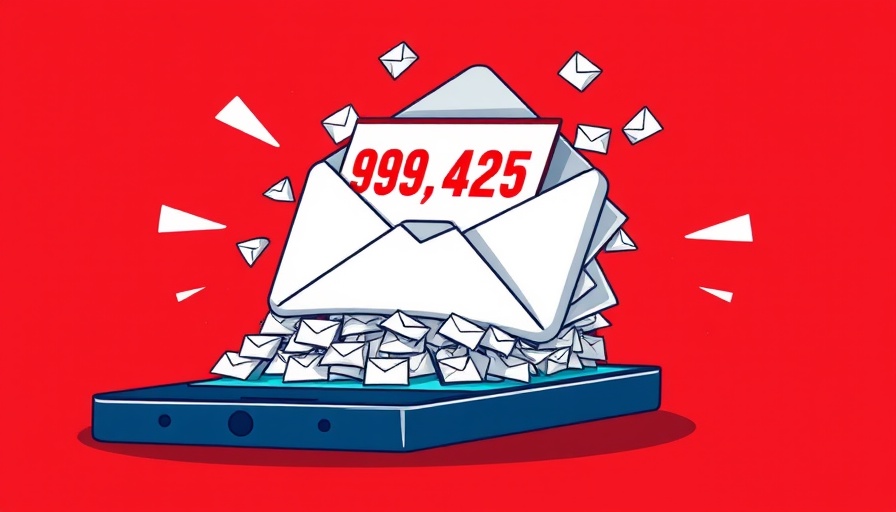
Understanding Digital Hoarding: A Growing Concern
In today’s data-driven world, digital space is often seen as limitless. However, a staggering report from Statista suggests that the amount of data created globally was projected to reach an astonishing 149 zettabytes in 2024 alone. With this increase comes a rising phenomenon: digital hoarding. About 50% of Americans struggle to delete files, hoarding outdated or unused data due to a fear of losing essential information. This widespread behavior not only clutters our digital lives but also contributes to wider implications for our cognitive abilities and cybersecurity.
The Underlying Issues of Digital Clutter
Digital hoarding manifests in messy email inboxes, chaotic photo libraries, and underutilized applications. A report highlights that 20% of Americans have over 100 items cluttering their desktop, an alarming statistic that suggests digital clutter results in rampant inefficiency. Beyond a mere nuisance, this chaos can lead to significant issues, such as reduced device performance and increased vulnerability to cybersecurity threats.
Why We Hoard
The reasons behind digital hoarding are often deeply psychological. Many individuals hold onto digital files due to a fear of loss or an emotional connection to digital memories, such as photos or important emails. This emotional baggage complicates the process of decluttering and contributes to an overwhelming sense of anxiety regarding digital organization.
The Role of Digital Decluttering Apps
Recognizing the growing issue, various digital decluttering apps aim to alleviate the burden of digital hoarding. These tools not only help to categorize and archive files but also actively remove unnecessary data. Solutions like CCleaner and Google One optimize storage and enhance security, thus providing a comprehensive approach to managing digital clutter.
Steps to Begin Your Digital Decluttering Journey
Embarking on a digital decluttering journey can feel daunting, akin to tackling a large project at work. It’s essential to begin with a structured outline:
- Accounts: Review all apps, cloud storage, email accounts, and social media.
- Categories: Organize emails and files by type and importance.
- Devices: Audit each device, including cloud storages and personal gadgets.
The aim is to comprehensively audit all aspects of your digital life, gradually decluttering and reorganizing.
Research Findings and Security Considerations
Research indicates that maintaining a high level of digital organization can vastly improve an individual's mental clarity and decision-making ability. Additionally, cluttered devices are often at risk of being compromised due to outdated security protocols. Integrating advanced security features via decluttering apps adds a significant layer of protection for personal information.
Future Trends in Digital Management
As the prevalence of data continues to grow, we can expect digital decluttering tools to evolve further, integrating AI advancements that will enhance their efficacy. These innovative apps will not only simplify digital organization but also proactively manage and protect data. Staying informed about these tools will become essential for enhancing one’s productivity and mental well-being.
Conclusion: Take Charge of Your Digital Life
As we navigate this increasingly digital landscape, taking steps to organize our digital assets is vital for both mental clarity and overall efficiency. By embracing decluttering strategies and leveraging technology effectively, you can reclaim control over your digital domain. Start your decluttering journey today, and witness the transformative benefits unfold—both in productivity and peace of mind.
 Add Row
Add Row  Add
Add 




 Add Row
Add Row  Add
Add 

Write A Comment